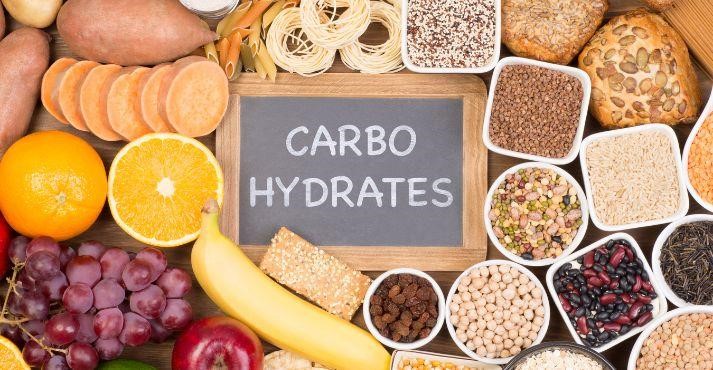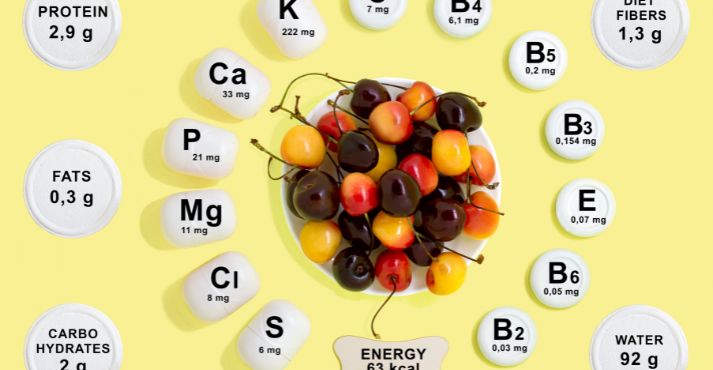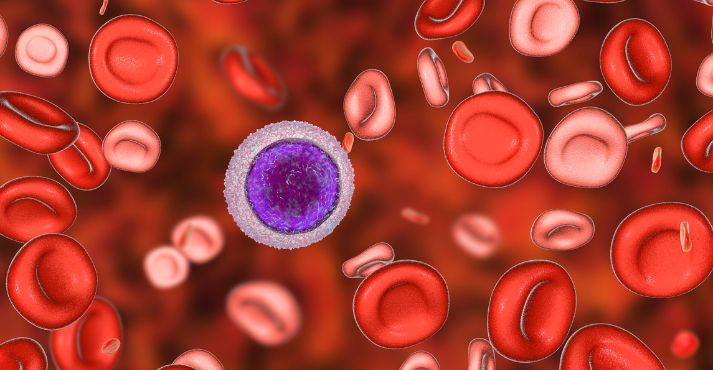Nutrients are substances in food that our bodies need to function correctly and stay healthy. They are essential for providing energy, building and repairing tissues, and supporting various bodily processes.
Without the suitable types and functions of nutrients, our bodies wouldn’t be able to perform basic tasks or grow properly.
According to the World Health Organization, a balanced diet of essential nutrients can help prevent malnutrition and various non-communicable diseases.
Studies show that nearly 1 in 3 people globally suffer from at least one form of malnutrition, highlighting the importance of proper nutrition.
This article will explore the different types of nutrients, their functions, and where to find them in our diet.
What are Nutrients?

Nutrients are substances found in food that our bodies need to function correctly. They are essential for maintaining health, providing energy, building and repairing tissues, and supporting various bodily processes.
Nutrients are divided into two main categories: macronutrients, which include carbohydrates, proteins, and fats, and micronutrients, which consist of vitamins and minerals in food.
Nutrients significantly influence our overall well-being. For example, carbohydrates provide energy for daily activities, proteins help build and repair tissues, and fats are necessary for hormone production and nutrient absorption.
Vitamins and minerals in food support immune function, bone health, and other vital processes.
The presence of these essential nutrients depends on the quality of food and effective menu planning. A well-balanced meal includes a variety of foods that provide all the necessary nutrients in the right amounts.
Understanding and incorporating the different types of nutrients into our diet can ensure better health and prevent various nutritional deficiencies and related diseases.
Types of Nutrients
Nutrients are categorized into several types, each playing a unique and vital role in our health. Understanding the different types of nutrients is essential for making informed dietary choices.
The two main categories of nutrients are macronutrients and micronutrients. In this section, we will focus on macronutrients, which include carbohydrates, proteins, and fats.
Macronutrients

1. Carbohydrates
Carbohydrates are our bodies’ primary source of energy. When we consume carbohydrates, our body breaks them down into glucose, which fuels our cells. There are two types of carbohydrates: simple and complex.
Simple carbohydrates are found in foods like sugar, honey, and fruits. They are made of one or two sugar molecules and are quickly absorbed by the body, providing a rapid energy boost. Examples include candy, soda, and fruit juices.
Complex carbohydrates consist of longer chains of sugar molecules and take longer to digest, providing sustained energy. They are a significant nutrient in food options like rice, bread, pasta, and vegetables. Including complex carbohydrates in your diet helps maintain stable blood sugar levels and provides long-lasting energy.
One crucial aspect of carbohydrate understanding is their glycemic impact. This refers to how quickly a particular carbohydrate-containing food affects blood sugar levels.
Examples of Carbohydrates:
- Rice: A staple in many diets worldwide, providing energy and essential nutrients.
- Bread: A common source of carbohydrates, especially whole-grain varieties.
- Fruits: Such as apples, bananas, and berries, which provide both simple and complex carbohydrates.
2. Proteins
Proteins are crucial for the growth, repair, and maintenance of body tissues. They are made up of amino acids, which are the building blocks of our body.
Proteins are classified into complete and incomplete proteins based on the presence of essential amino acids and are critical to food nutrition.
Complete proteins contain all nine essential amino acids our bodies cannot produce. They are found in animal products like meat, fish, eggs, and dairy.
Incomplete proteins lack one or more essential amino acids and are typically found in plant-based foods. However, you can create a complete protein source by combining different plant-based proteins, such as beans and rice.
Examples of Proteins:
- Meat: Chicken, beef, and lamb provide complete proteins.
- Legumes: Like beans, lentils, and chickpeas, which are excellent sources of plant-based proteins.
- Tofu: A versatile source of plant-based protein made from soybeans, suitable for vegetarians and vegans.
3. Fats
Fats are essential for energy storage, cellular function, and hormone production. They also help absorb specific vitamins and provide insulation for our bodies. There are three main types of fats: saturated, unsaturated, and trans fats.
Saturated fats are typically solid at room temperature and are found in animal products like butter, cheese, and red meat. Consuming too much-saturated fat can raise cholesterol levels and increase the risk of heart disease.
Unsaturated fats are usually liquid at room temperature and are considered healthier. They are found in olive oil, nuts, seeds, and avocados. Unsaturated fats are further divided into monounsaturated and polyunsaturated fats, which benefit heart health.
Trans fats are artificially created through a process called hydrogenation and are found in convenience foods like margarine and commercially baked goods. They can increase bad cholesterol levels and should be avoided as much as possible.
Examples of Fats:
- Oils include olive oil and canola oil, which are rich in unsaturated fats.
- Nuts: Including almonds, walnuts, and peanuts, which provide healthy fats and protein.
- Avocados: A nutrient-dense fruit high in healthy monounsaturated fats.
Fats are also used in various food products as emulsifiers, which help mix ingredients that typically do not blend well, like oil and water. This is common in products like mayonnaise and salad dressings.
Micronutrients
Micronutrients are nutrients our bodies need in smaller amounts, but they are no less critical than macronutrients. They play crucial roles in supporting various bodily functions and maintaining overall health. The two main types of micronutrients are vitamins and minerals.
These essential nutrients help our bodies perform vital biochemical processes and ensure we stay healthy and strong.
1. Vitamins

Vitamins are organic compounds that support various biochemical processes in the body. They are necessary for growth, immune function, and overall health and are thus an imperative part of food nutrients. Vitamins are classified into two categories: water-soluble and fat-soluble.
Water-soluble vitamins dissolve in water and are not stored in the body, so we need to consume them regularly. Examples include vitamin C and the B vitamins. These vitamins are found in fruits like oranges and strawberries, vegetables such as bell peppers and broccoli, and grains. Vitamin A is crucial for supporting your vision, especially in low-light conditions.
Fat-soluble vitamins, including vitamins A, D, E, and K, are stored in the body’s fatty tissues and liver. They are found in dairy products, eggs, and fatty fish.
Fat-soluble vitamins are essential for maintaining vision, bone health, and the immune system. They also act as antioxidants, helping to protect the body from damage caused by free radicals.
Examples of Vitamins:
- Vitamin A is found in carrots, sweet potatoes, and spinach and is essential for vision and immune health.
- Vitamin C: Found in citrus fruits, strawberries, and bell peppers, it helps heal wounds and maintain healthy skin.
- Vitamin D: Found in sunlight, fortified milk, and fish; supports bone health.
2. Minerals

Minerals are nutrients, inorganic elements crucial for bone health, nerve function, and various metabolic processes. They are divided into two categories: macrominerals and trace minerals.
Macro minerals, such as calcium, potassium, and magnesium, are required in more significant amounts and are vital for maintaining strong bones and teeth, proper muscle function, and fluid balance in the body.
Sources include dairy products like milk and cheese, leafy greens like kale and spinach, and nuts.
Trace minerals, such as iron, zinc, and selenium, are needed in smaller amounts. These minerals are essential for producing red blood cells, supporting immune function, and acting as antioxidants. Sources include meat, shellfish, legumes, and seeds.
Examples of Minerals:
- Calcium: Found in dairy products, leafy greens, and fortified foods; essential for strong bones and teeth.
- Iron: This mineral is found in red meat, beans, and fortified cereals. It is important for blood production and transporting oxygen in the body.
- Zinc: Found in meat, shellfish, and legumes; supports immune function and wound healing.
Incorporating various functional foods into our diet ensures that we receive a wide range of vitamins and minerals necessary for good health.
Functional foods like fortified cereals, probiotic yogurts, and enriched grains provide additional health benefits beyond essential nutrition, helping to improve overall wellness and prevent deficiencies.
Functions of Nutrients

Nutrients are vital in maintaining our health and ensuring our bodies function correctly. Each type of nutrient has specific functions that contribute to overall well-being. Understanding these functions helps us appreciate the importance of a balanced diet rich in essential nutrients.
Here, we explore the critical functions of nutrients in energy production, growth and development, metabolism regulation, and immune function.
1. Energy Production
Energy is crucial for our bodies to perform daily activities and maintain bodily functions. Carbohydrates, fats, and proteins are our diet’s primary energy sources.
Carbohydrates are the body’s primary energy source. When consumed, carbohydrates are broken down into glucose, which our cells use for energy. Foods like bread, rice, and fruits are rich in carbohydrates.
Fats are a concentrated source of energy, supplying more than double the energy of carbohydrates or proteins per gram. They are stored in the body’s adipose tissue and used when the body needs extra energy. Examples include oils, nuts, and avocados.
Proteins are primarily used for growth and repair but can be converted into energy when needed. Meat, legumes, and dairy products are excellent sources of protein.
The caloric value of food refers to the amount of energy it provides. Maintaining an energy balance—the calories consumed match the calories expended—is essential for maintaining a healthy weight and overall health.
2. Growth and Development
Nutrients are critical for growth, development, and tissue repair. Proteins, vitamins, and minerals are essential during different life stages, from childhood to adulthood.
Proteins are the building blocks of our body, essential for the growth and repair of tissues. They are crucial during periods of rapid growth, such as childhood and adolescence, for healing injuries and building muscle mass. Thus forming an essential part of food and nutrition.
Vitamins and minerals play critical roles in growth and development. For example, vitamin D and calcium are essential for bone growth and strength. Iron is crucial for blood production, and vitamin A supports vision and immune function.
The demand for specific nutrients varies during different life stages. Children need more nutrients to support growth, pregnant women require extra nutrients for fetal development, and older adults need nutrients to maintain bone health and prevent chronic diseases.
3. Metabolism Regulation
Metabolism involves all the biochemical processes within our bodies that maintain life. Vitamins and minerals support these metabolic processes by acting as enzyme cofactors.
Vitamins such as B-complex vitamins play a crucial role in energy metabolism by helping convert food into energy. Vitamin B12 and folic acid are essential for DNA synthesis and red blood cell production.
Minerals like magnesium and zinc are essential for enzymatic functions and metabolic pathways. Magnesium is involved in over 300 biochemical reactions, including energy production and protein synthesis. Zinc supports enzyme function and is essential for DNA synthesis and cell division.
4. Immune Function
A robust immune system protects our bodies against infections and diseases. Certain nutrients play a significant role in supporting and boosting the immune system.
Vitamin C is a powerful antioxidant that helps protect cells from damage and supports the production of white blood cells, which are crucial for fighting infections. Citrus fruits, strawberries, and bell peppers are excellent sources of vitamin C.
Zinc is essential for immune cell function and signaling. It helps the body produce and activate T-cells, which are essential for immune response. Foods rich in zinc include meat, shellfish, and legumes.
Other immune-boosting nutrients include vitamin E, which acts as an antioxidant, and vitamin A, which helps maintain skin integrity and mucous membranes, our body’s first line of defense.
Sources of Nutrients

Nutrients are essential for our health, and knowing where to find them in our diet is essential. There are various sources of nutrients, including whole foods, fortified foods, and supplements. Understanding these sources helps us make informed dietary choices to get the essential nutrients our bodies need.
1. Whole Foods
Whole foods are natural and unprocessed, retaining all their nutrients. They are the best sources of vitamins, minerals, and other essential nutrients. Incorporating a variety of whole foods into your diet ensures you receive a wide range of nutrients.
Examples of Nutrient-Rich Whole Foods:
- Carbohydrates: Whole grains like brown rice, quinoa, and oats. These can be used in whole-grain salads, grain bowls, and breakfast porridge.
- Proteins: Lean meats, fish, beans, and legumes. Incorporate these into grilled chicken salads, fish tacos, and bean chili.
- Fats: Avocados, nuts, and seeds. Use these in dishes like avocado toast, nut butter smoothies, and seed-crusted fish.
- Vitamins: Fruits and vegetables like berries, leafy greens, and bell peppers. Include these in fruit salads, green smoothies, and stir-fries.
- Minerals: Dairy products, leafy greens, and nuts. Add these to yogurt parfaits, kale salads, and nut-studded granola.
Including these nutrient-rich foods in restaurant menus can offer balanced and healthy options for customers. For example, a quinoa salad with mixed vegetables and a side of grilled chicken provides a balanced meal with essential nutrients.
2. Fortified Foods
Fortified foods contain different types of nutrients that are not naturally present. This process enhances the nutritional value of the food and can help prevent nutrient deficiencies in the population.
Benefits of Fortified Foods:
- They help fill nutritional gaps in the diet.
- They can prevent specific nutrient deficiencies, such as iodine deficiency, through iodized salt.
Examples of Commonly Fortified Foods:
- Fortified cereals: Enriched with vitamins and minerals like iron and B vitamins.
- Fortified milk: Supplemented with vitamin D and calcium.
- Fortified bread: Often contains added iron and folic acid.
These foods can be easily incorporated into daily meals. For instance, starting the day with a bowl of fortified cereal with fortified milk ensures a good intake of essential nutrients like calcium and vitamin D.
3. Supplements
Getting nutrients from food is ideal, but there are times when supplements are necessary. Supplements can help individuals with specific nutrient deficiencies or increased nutrient needs, especially for essential nutrients.
When Supplements Might Be Necessary:
- During pregnancy, additional folic acid and iron are needed.
- This is for individuals with dietary restrictions, such as vegans, who may need vitamin B12.
- For those with medical conditions that affect nutrient absorption.
It’s essential to use supplements responsibly and under the guidance of a healthcare professional. Overuse of supplements can lead to nutrient imbalances and potential health risks.
Importance of Responsible Supplement Use:
- Consult with a healthcare provider before starting any supplement.
- Ensure supplements are used to complement, not replace, a healthy diet.
- Be aware of the recommended daily allowances to avoid excessive intake.
By understanding the various sources of nutrients and making informed choices, we can maintain a balanced and healthy diet. Whether through whole foods, fortified foods, or responsible use of supplements, ensuring adequate nutrient intake is critical to overall health and well-being.
Balancing Nutrients in Menus
Creating balanced and nutrient-dense menus is essential for promoting health and satisfaction among customers.
Restaurants can offer meals that support overall well-being by thoughtfully planning menus, catering to diverse dietary needs, and providing clear nutritional information. Here’s how to ensure menus are both nutritious and appealing.
1. Menu Planning
Planning balanced menus involves incorporating various foods to ensure a wide range of essential nutrients. Here are some tips for creating nutrient-dense menus:
Tips for Creating Balanced Menus:
- Include a variety of food groups: Ensure each meal contains a mix of carbohydrates, proteins, and healthy fats. For example, a lunch menu could include whole-grain bread (carbohydrates), grilled chicken (protein), and avocado (healthy fat).
- Use whole foods: Incorporate nutrient-rich foods like fruits, vegetables, lean meats, and whole grains. Avoid overly processed foods to maximize nutrient intake.
- Add functional foods: Include foods that offer additional health benefits, such as yogurt with probiotics, which can aid digestion.
- Ensure color variety: A colorful plate is often more nutritious, as different colors typically indicate a variety of vitamins and minerals. Include a mix of colorful vegetables and fruits in the dishes.
Methods for Incorporating Variety:
- Rotate ingredients: Change the menu seasonally to include fresh, seasonal produce, which is often more nutritious and flavorful.
- Offer varied cuisines: Incorporate dishes from different cultures to provide a range of nutrients and flavors.
- Use fortified foods: Integrate fortified foods like fortified cereals and milk to enhance the nutritional value of meals.
2. Customer Preferences
Catering to different dietary needs and preferences is crucial for inclusivity and customer satisfaction. Here’s how to adapt menus for various dietary requirements while catering to different types of nutritional needs:
Catering to Dietary Needs:
- Vegan and vegetarian diets: Offer plant-based proteins such as tofu, legumes, and nuts. A vegan-friendly dish could be a quinoa salad with chickpeas and mixed vegetables.
- Gluten-free diets: Use gluten-free grains like quinoa, rice, and corn. Ensure dishes are free from gluten-containing ingredients and cross-contamination.
- Allergies and intolerances: Clearly label menu items and provide alternatives for common allergens like nuts, dairy, and soy. For example, almond milk can be offered as a dairy-free smoothie option.
Examples of Menu Adaptations:
- Vegan: Black bean and sweet potato tacos with avocado salsa.
- Vegetarian: Spinach and feta stuffed mushrooms.
- Gluten-free: Grilled salmon with quinoa and roasted vegetables.
3. Nutritional Labeling
Providing clear and accurate nutritional labeling on menus is essential for transparency and helping customers make informed choices. Here’s why it matters and how to do it effectively:
Importance of Nutritional Labeling:
- Transparency: Helps customers understand what they are consuming, supporting those with specific dietary needs.
- Informed choices: Enables customers to select meals that meet their nutritional goals, such as low-calorie or high-protein options.
- Health promotion: Encourages healthier eating habits by highlighting nutrient-dense options.
Guidelines for Accurate Labeling:
- Include essential information: List calories, macronutrients (carbohydrates, proteins, fats), and essential micronutrients (vitamins and minerals).
- Use standard portions: Ensure the nutritional information corresponds to the standard serving size provided.
- Please keep it simple: Present the information in a clear and easy-to-read format, such as a table or chart.
- Regular updates: Update nutritional information regularly to reflect any recipe changes or new menu items.
Nutrient Deficiencies and Excesses
Recognizing and Addressing Deficiencies
Nutrient deficiencies can quietly impact well-being, often with subtle signs that may go unnoticed. Understanding these deficiencies, recognizing their symptoms, and taking proactive steps to address them through balanced nutrition is essential for optimal health.
Iron Deficiency: Unveiling the Signs

Iron deficiency can manifest as fatigue, weakness, and pale skin. Including iron-rich foods such as lean meats, beans, and leafy greens or considering supplements under professional guidance can help replenish iron levels.
Vitamin D Insufficiency: Shedding Light on Deficiency
Symptoms like bone pain and muscle weakness may indicate a lack of vitamin D. Exposure to sunlight and consumption of vitamin D-rich foods and supplements, when necessary, contribute to maintaining adequate levels.
Vitamin B12 Depletion: Energizing the Body
Fatigue, weakness, and neurological issues can signal a deficiency in vitamin B12. Incorporating foods like fish, dairy, and fortified cereals or supplementing supports energy production and nerve function.
Calcium Shortfall: Strengthening Bone Health
Inadequate calcium intake may lead to weakened bones. Dairy products, leafy greens, and fortified alternatives are valuable dietary sources that promote bone health.
Iodine Deficiency: Nourishing Thyroid Function
Thyroid-related issues may arise from iodine deficiency. Including iodized salt, seaweed, and dairy products in the diet helps support proper thyroid function.
Omega-3 Fatty Acids: Balancing Essential Nutrients
Lack of omega-3 fatty acids can affect cardiovascular health and cognitive function. Fatty fish, flaxseeds, and walnuts are excellent sources to include in a balanced diet.
Zinc Deficiency: Bolstering Immune Health
A weakened immune system may indicate a zinc deficiency. Incorporating zinc-rich foods like meat, legumes, and seeds, or considering supplements, supports immune function.
Balanced Nutrition: A Comprehensive Solution
The cornerstone of addressing nutrient deficiencies is a commitment to balanced nutrition. A diverse and varied diet that includes fruits, vegetables, whole grains, lean proteins, and dairy ensures a broad spectrum of essential nutrients.
Managing Nutrient Excess
While ensuring adequate nutrition is crucial, navigating the potential risks associated with excessive intake of certain nutrients is equally essential. Understanding these risks and implementing balanced and mindful dietary management strategies contribute to well-being.
Vitamin Overload: The Risks of Excessive Intake
Excessive intake of specific vitamins, such as fat-soluble vitamins (A, D, E, K), can lead to toxicity. Being mindful of supplementation and focusing on obtaining vitamins through a varied diet helps strike a balance.
Mineral Concerns: Finding Equilibrium
Overconsumption of minerals like iron, zinc, and calcium may pose health risks. Maintaining recommended dietary levels and avoiding unnecessary supplements contribute to a balanced mineral intake.
Protein Pitfalls: The Downsides of Excess
While protein is essential, excessive intake, especially from supplements, may strain the kidneys and lead to other health issues. Balancing protein sources and evaluating alternatives to animal protein ensures a healthy approach.
Sodium Sensitivity: Managing Salt Intake
High sodium intake is linked to hypertension and cardiovascular issues. Managing salt intake by choosing fresh, whole foods and limiting processed foods supports heart health.
Sugar Struggles: Curbing Excessive Sugars
Excess sugar consumption contributes to various health concerns, including obesity and metabolic issues. Mindful choices, such as using natural sugars in fruits and reducing added sugars, help manage risks.
Dietary Fat Dilemma: Moderation Is Key
While healthy fats are essential, excessive saturated and trans fats may impact heart health. Choosing sources of unsaturated fats and moderating overall fat intake contribute to a balanced diet.
Caloric Caution: Balancing Energy Intake
Consuming more calories than the body needs can lead to weight gain and related health issues. Balancing energy intake with physical activity supports overall health and weight management.
Balanced Dietary Management: A Holistic Approach
Achieving a balanced diet involves conscious choices, moderation, and a holistic approach to nutrition. It’s about understanding individual dietary needs, being mindful of nutrient sources, and avoiding unnecessary excesses.
Conclusion
Understanding the types and functions of nutrients is essential for maintaining a healthy lifestyle. Nutrients from various sources—whole foods, fortified foods, or supplements—play critical roles in energy production, growth, metabolism, and immune function.
By incorporating diverse nutrient-rich foods into our diets, we can ensure our bodies get the essential vitamins, minerals, and other nutrients needed for optimal health.
Menu planning should focus on creating balanced, nutrient-dense options that cater to different dietary needs and preferences, supported by clear nutritional labeling for transparency. Making informed dietary choices can support our overall well-being and lead healthier lives.





























